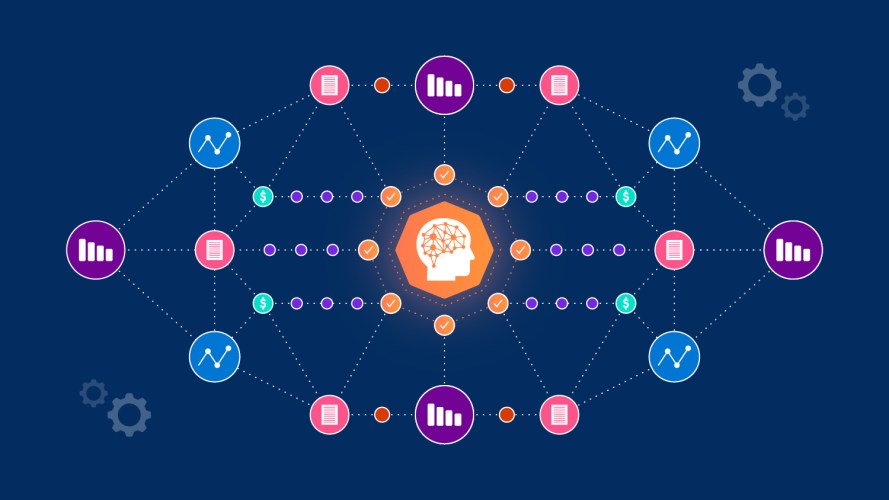Training Your Own AI Model Probably Won’t Help Win Customers, But Data Will

AI plays a key role in personalized customer experiences. But a data platform that connects the dots between every data point is the real hero.
How can a brand turn a social media “like” into a sale? Or better yet, a loyal customer? AI gets all the attention right now, but the answer is less sexy. It’s data.
Picture this. You’re a global consumer retail brand with a presence across brick-and-mortar locations, an ecommerce site, and social media storefronts. A longtime in-store shopper just “liked” a new product on Instagram. This triggers an autonomous agent to reach out to the shopper with a personalized discount code to nudge them along to the next step.
The agent shares a link to your site, where the shopper finds a bespoke shopping page, based on everything you know about them. It’s like visiting a store that carries only items they love, in their size and within their budget. After the sale, autonomous agents follow up to see how they like the item, and offer a discount on complementary pieces. That shopper feels like a real VIP.
From generating automated messages to creating personalized shopping websites and post-sales service, AI is playing an increasingly pivotal role in the shopping journey. But what makes these curated digital experiences possible isn’t some trillion-parameter, custom-trained large language model (LLM) but a new kind of data platform that aggregates and connects the dots between each and every data point.
Without that connection, AI is simply not that helpful. In fact, 30% of generative AI projects will be abandoned in 2025 due in part to poor data quality.
AI and data: the non-negotiables of next-level customer experience
AI requires data. Lots of it. Many businesses think if they train their own LLM using their own data they can produce an AI model that knows everything about their business and their customers.
But LLM training is very expensive, time-consuming, and requires specialized expertise. For the vast majority of companies, that option is just not feasible. Further, unlike a database, an LLM has no permission controls for data access. Then there’s the issue of integrating the whole thing into all your apps and systems.
And the truth is, even if you could train your own LLM, it wouldn’t be 100% accurate for long. It only knows what it was last trained on. So every time you update a customer record, for example, the LLM becomes outdated.
The better approach is to pair a pre-trained LLM with a data platform that pulls and marries data from multiple systems, regardless of the data’s source or type. By providing the AI with a real-time stream of relevant data and context, you can vastly improve the accuracy of its outputs and quickly spot important patterns.
Consider our original example. Our shopper engaged with a social media post before connecting with an autonomous agent for more information. In isolation, those two interactions might not amount to much, but together they add up to a clear buying intent signal. Now imagine this at scale, for a brand that sees hundreds or even thousands of interactions like this daily. It’s easy to envision a near-future where AI agents and salespeople work together to identify the most valuable opportunities and next steps to resolve a service case and secure more sales.
This future isn’t limited to consumer retail. In healthcare, autonomous agents can verify enrollee benefits and collate reams of patient information, insurance and pharmacy coverage details, then quickly summarize it. From healthcare and financial services to manufacturing and life sciences, the business uses are endless.
How metadata sharpens every customer interaction
Of course, AI can only achieve these amazing feats if it can find the right data, and that’s where metadata comes in. Think of metadata like a labeling system, providing details like when a file was created or modified, and by whom.
Metadata describes and organizes data, making it easier to find and use, enabling the AI to find the information it needs to draft a personalized customer message, or generate a list of top sales prospects.
By harmonizing data and metadata in one platform, businesses turn raw data into something they can actually use. This yields sharper AI predictions and more accurate, personalized outputs, all from a single, cohesive platform that connects the dots in a way that siloed data simply can’t.
Data takes the guesswork out of AI
Without a platform that organizes and orchestrates all your data, AI will struggle to do anything truly exceptional. This data platform is the backbone of an agile, responsive business that anticipates changes, jumps on opportunities, and knows what customers want, when they want it, and how to deliver it. This degree of precision creates better customer experiences and, in turn, customer loyalty.
So if data maturity is the key to AI success, how do you get there? This data strategy guide lays out best practices for business and data team alignment, using tools that uncover hidden insights, and much more.
A data platform that brings your entire organization together around the customer, to improve experiences, and drive growth and new opportunities, is essential in turning a single buying intent signal like an Instagram “like” into a sale.
Without it, your AI is just guessing.

































